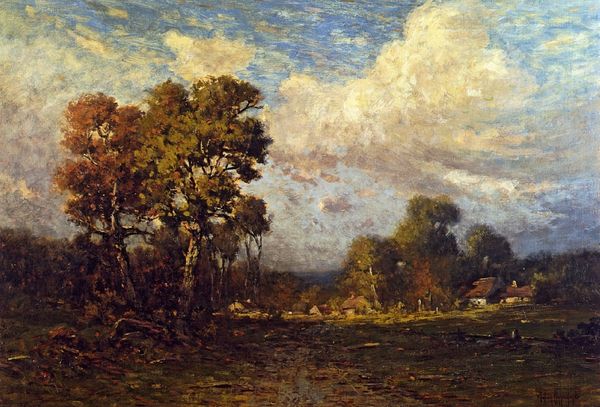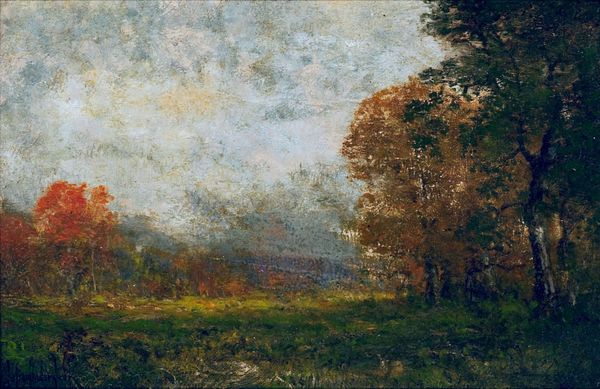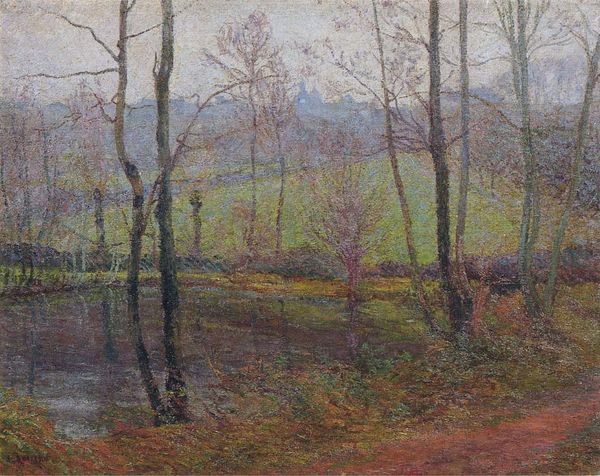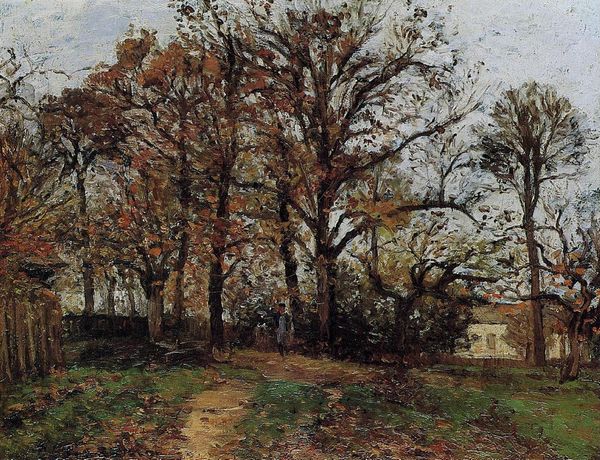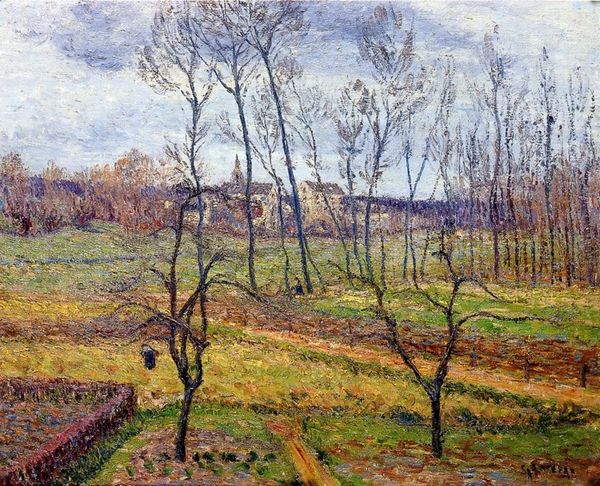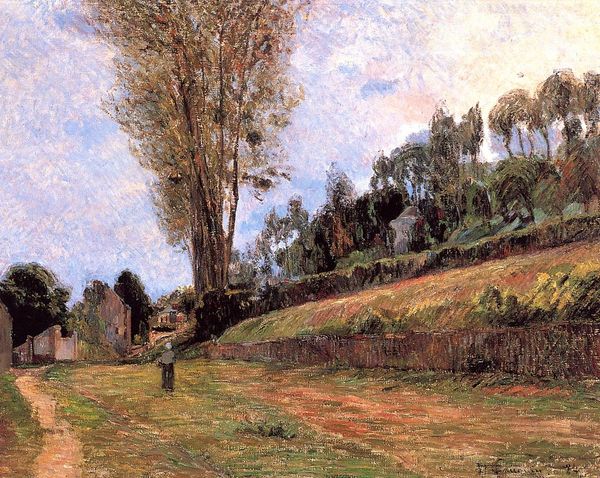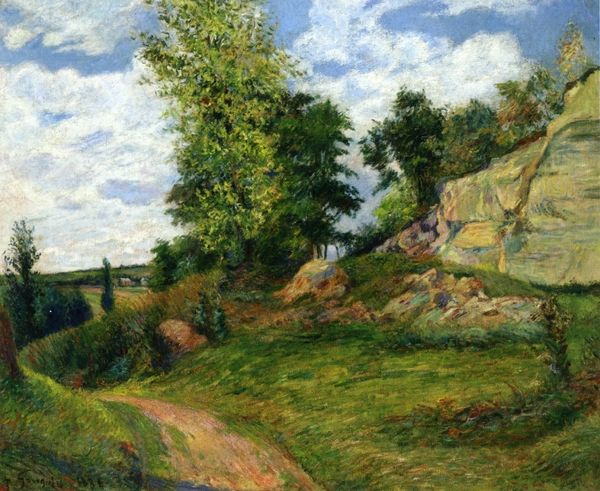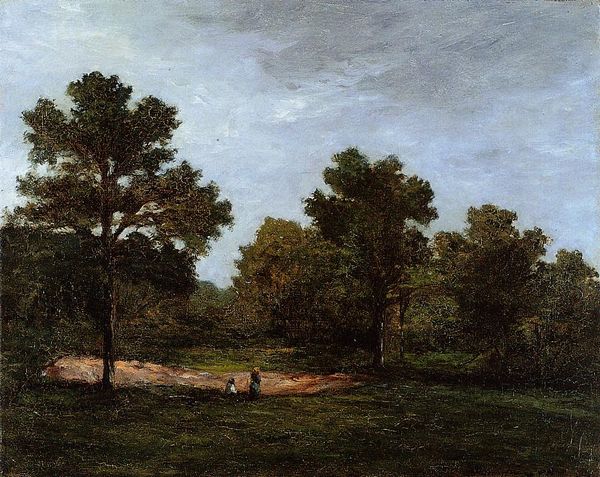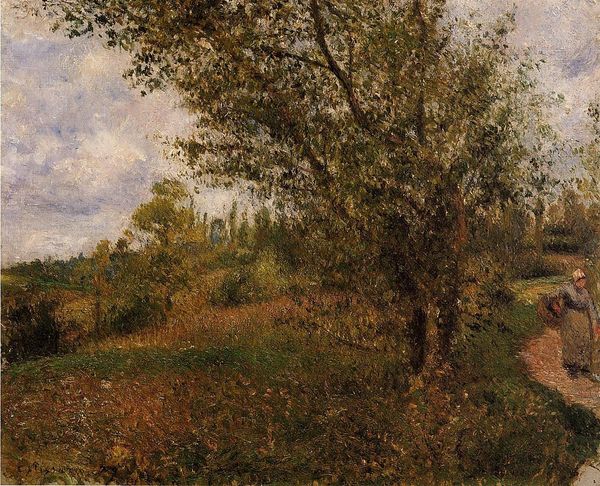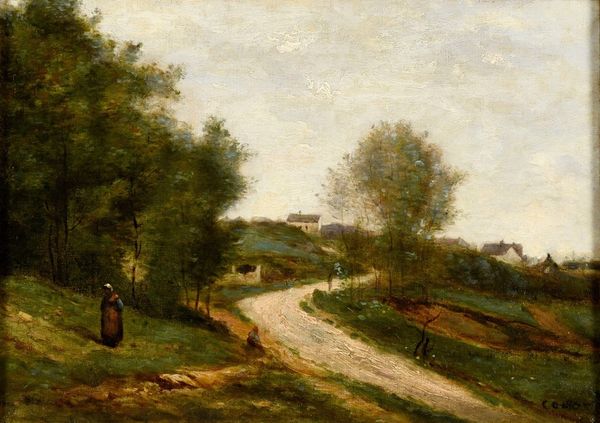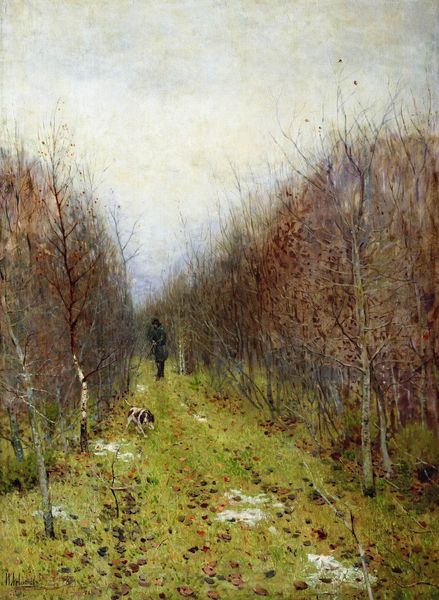
Copyright: Public domain
Editor: Looking at Willard Metcalf's "Prelude," painted in 1909 with oil on canvas, I'm struck by its tranquility. It feels like a snapshot of a fleeting moment in nature. What kind of story do you think this piece is telling? Curator: Well, beyond just a snapshot, it's interesting to consider Metcalf's place in the art world at that time. He was working amidst a rising tide of modernism in Europe, but figures like Metcalf chose to depict the American landscape in a way that affirmed more traditional values. We need to think about the intended audience: who would be viewing and buying such works, and what social desires did these landscape paintings fulfill? Editor: That’s an interesting point about the social values. I guess I was seeing it purely aesthetically. Curator: And there's value in that too! But it’s vital to contextualize the image within its contemporary debates around national identity. What kind of image of America is being produced here, versus what European avant-garde artists were exploring? Also, notice the path winding through the scene. What could this symbolize, considering the time period and cultural context? Editor: Maybe the path represents progress or westward expansion? It feels intentionally placed, guiding the viewer’s eye. I guess the painting becomes less about a neutral scene, and more about what the land *means* to viewers in society. Curator: Exactly. Metcalf isn't simply representing nature; he is mediating it through a specific cultural lens, and the art market played a key role in determining which visions became popular. Editor: I'm beginning to see how even a seemingly simple landscape can be loaded with historical and social significance. Thanks for making me think beyond just the surface! Curator: Of course! Remember, understanding art is always a conversation between what the artist puts into the work and what the world projects onto it.
Comments
No comments
Be the first to comment and join the conversation on the ultimate creative platform.
